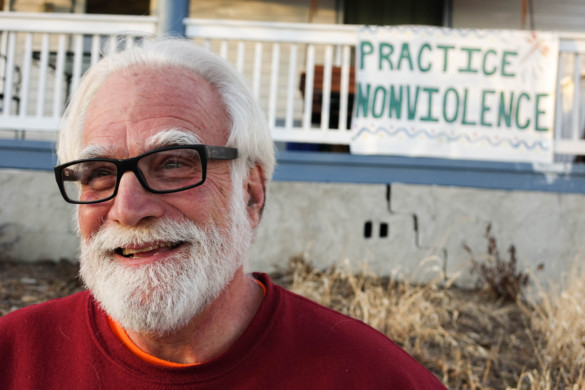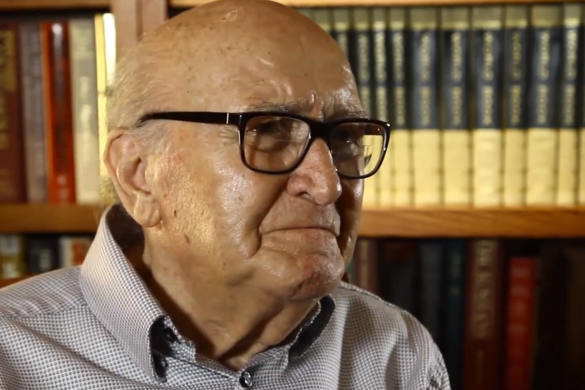Iowan Marcy Schrum’s story illustrates the challenges of living with an eating disorder
Words by Levi Larson
Marcy Schrum began worrying about her weight and body at age seven. By junior high, Schrum was dabbling in dieting: Diet Coke, pickles and eventually the thrill of counting calories. Food restriction came first, then excessive exercise, purging and self-loathing all quickly became tenants of Schrum’s life with an eating disorder.
“It’s this internal voice, and it makes you not worth it. And not good enough,” Schrum said. “Not enough of anything.”
Schrum is an eating disorder survivor from Iowa and now a licensed independent social worker living in West Des Moines.
Shrum is not alone in her struggles. Body image is an issue many Americans struggle with daily. The pressure to look a certain way is something deeply ingrained in American culture—and the effects are startling.
Studies show that 42 percent of first- to third-grade girls want to be thinner.
A Dark Place
Living with an eating disorder is living with a mental illness. “The mind of an eating disorder is self-loathing,” Schrum said. “It’s constant chatter and evaluation through the lens of food, weight and avoiding emotion. It’s dark.”
Schrum felt betrayed by her own body. “The body is the enemy,” Schrum said, describing her thought process. “It needs to be punished.” To take control, Schrum turned to disordered eating behaviors.
Eating disorders are generally classified in three major subsets: Anorexia nervosa, bulimia nervosa and binge-eating disorder. There is a certain set of criteria to receive one of these diagnoses; however, individuals not categorized by the major three may fall under the most common subset of Eating Disorder Not Otherwise Specified (EDNOS).
I don’t know how many people told me I looked great when I was at my worst.”
-Marcy Schrum
During her time in and out of treatment, Schrum was diagnosed with both clinical anorexia and bulimia nervosa at different points.
Numerous roadblocks stand in the way of recovery, particularly denial surrounding one’s own illness. Society tends to normalize unhealthy eating habits through diet fads, a pressure to conform to beauty standards and the constant reinforcement of ideal body image through the media we consume.
“I don’t know how many people told me I looked great when I was at my worst,” Schrum said.
And it’s easy to disguise disordered eating behaviors as healthy. “I only exercised to punish and burn calories before I started doing yoga,” Schrum said.
A fine line runs between behaviors that are associated with a healthy lifestyle and the practice of disordered eating behaviors. Regular exercise and careful eating can all be part of a healthy lifestyle, but those healthy behaviors can quickly become obsessive for people with body image issues or body dysmorphia, which causes an individual to obsess over their appearance with an intense focus on their perceived flaws.
“We stop listening to our bodies,” Schrum said. “We become obsessed. We run for an hour straight, even when our bodies to tell us not to.”
The thoughts that come with an eating disorder are pervasive and overwhelming. Even with treatment, it’s unlikely they’ll stay away forever. It’s cyclical. “To pretend to be okay, you had to eat, and to be okay after eating, you had to purge,” Schrum said.
Many treatments still focus only on the medical stabilization aspect of the disease. Medical stabilization merely concerns getting the patient to a weight within a “healthy” BMI index, and making sure body vitals are at proper levels, such as making sure that electrolytes are balanced. When treatment takes this approach, true, holistic recovery doesn’t take place and, in many cases, this prompts it to get worse.
Treatment
Schrum first entered treatment during college in 1995, and since then, she has been through five treatment programs for her battle with eating disorders.
Having a mental illness that requires inpatient therapy, as well as hospitalization and constant monitoring, is a battle for life—especially with the lack of inpatient treatment options in Iowa. According to the Treatment Advocacy Center, the state ranks second-to-last of the 50 states in mental healthcare and dead last for available psychiatric inpatient beds. There are only 64 total in the whole state.
Schrum’s most recent treatment came after she started her family. Her restricting and dark thoughts began to return. This time, she was ready to receive the help she needed and sought treatment at Melrose Center in St. Louis Park, Minnesota.
The Melrose Center works to treat patients beyond medical stabilization, using therapy methods best suited to each patient. In most eating disorder cases, this will be cognitive behavioral therapy. Cognitive behavioral therapy works to change the thoughts behind the behaviors. The goal is to develop the patient’s coping skills so that when they’re put in a challenging situation, they’re able to cope using healthier mechanisms than starvation or purging.
Melrose Center Clinical Director Heather Gallivan recognizes the challenges of treating a patient battling an eating disorder. “Recovery from an eating disorder is often not a straight line,” Gallivan said.
To ensure the best for each patient, Melrose works to individualize the care for each person’s ’s specific needs.. Their mission is to use compassion when providing treatment. Since they treat nearly 2,300 patients each year, keeping a staff that specializes in eating disorder recovery is critical to Melrose’s success stories like Schrum’s own.
Eating disorder treatment is complex because, unlike battling a drug addiction where you are able to detox and recover, you can’t just eliminate food from your life and move on. “You need to eat to live,” Schrum said.
Why Minnesota?
Because the University of Iowa Hospitals and Clinics is Iowa’s only inpatient treatment option for those battling an eating disorder, many Iowans choose Minnesota for care.
Kelly Greiner, board president of the Eating Disorder Coalition of Iowa, explained part of this lack of care in the Hawkeye state stems from the belief that there will not be enough patients to sustain any additional facilities. Another aspect is the insurance side of things. Many facilities are unwilling to come into a state knowing that it will be an uphill battle. Currently, EDCI is talking to facilities about coming into Iowa and giving patients an option for treatment in their home state.
But EDCI was not founded to fill that void—or even make referrals for treatment. Instead, the coalition exists to extend support to those impacted by eating disorders and to let them know their options. “It’s about awareness,” Greiner said.
As a recovered individual who went through the ups and downs of treatment herself, Greiner uses her work with EDCI to discuss eating disorders with others and help to remove some of the stigma associated with the illness. She wants to help others understand the complexities of eating disorders and the recovery process. “Hope is huge for me,” Greiner said.
A Not-So-Happy Ending
Eating disorder recovery is not quick or nor is it easy. “You spend so much time honing these negative thoughts [that] they become your truth,” Schrum said.
It wasn’t until February 2010, during her most recent time spent in treatment at Melrose Center, that Schrum accepted the long-term aspect of eating disorder recovery. “It was there I realized this was a journey, not just going to treatment and being okay,” Schrum said.
After her stay at Melrose, Schrum went back to school to get her Masters degree, which she now uses to provide individual and family therapy at Youth Emergencies Services and Shelter.
Schrum’s story is not the only of its kind. Many more happen every year, and most are far less fortunate.
Anna Westin was a young woman from Minnesota who took her own life during an anorexia relapse that required a hospitalization for which her insurance company refused to pay.
And now, the Anna Westin Act is a piece of proposed eating disorder legislation inspiring calls for mental health reform at both the federal and state levels.
Westin’s story serves as a reminder of the serious and potentially fatal nature of eating disorders. Approximately 30 million Americans will battle an eating disorder at some point in their lives. And anorexia nervosa has the highest mortality rate of any mental disorder.
Yet many individuals battling an eating disorder do not get the help they need. Only six percent of bulimic individuals will receive treatment.
Even in that dark place created by an eating disorder, recovered individuals like Schrum and Greiner remind us that there is hope.
“I remember people telling me when I was sick that it is worth it, and I didn’t believe them,” Greiner said. “But it is.”
If you or someone you know is struggling with an eating disorder, seek help by contacting a physician or by calling the National Eating Disorder Awareness Helpline: 1-800-931-2237.












